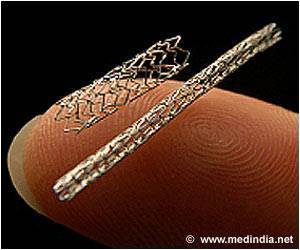Catheter ablation, a common cardiovascular procedure, appears no more effective than drug therapy to prevent strokes, deaths and other complications in patients with atrial fibrillation.

TOP INSIGHT
Atrial fibrillation patients who receive catheter ablation experience much greater symptom relief and long-term improvements in quality of life.
"We have long known that physicians and patients are dissatisfied with drug therapy for atrial fibrillation, so we pursued this study to find out if catheter ablation would provide more effective treatment for these patients," says Douglas Packer, M.D., a Mayo Clinic cardiologist and the study's principal investigator. "While data from the trial was inconclusive in showing that catheter ablation was better than drug therapy in reducing rates of deaths and strokes, it showed strong evidence of reduced recurrence of atrial fibrillation, as well as reductions in mortality or cardiovascular hospitalizations."
CABANA enrolled 2,204 patients at 126 centers in 10 countries from 2009 to 2016. Each patient had new-onset or undertreated atrial fibrillation. In the study population, the median patient age was 68, and 37 percent were women. There were significant co-morbidities, such as high blood pressure, and a history of stroke and diabetes. Patients were randomly assigned to two groups of equal proportions to catheter ablation or drug therapy.
The primary comparison between catheter ablation and drug therapy showed a 14 percent lower risk of major complications such as death, stroke, severe bleeding and cardiac arrest, but the difference was not statistically significant. Ablation significantly reduced mortality or cardiovascular hospitalization by 17 percent when compared with drug therapy and reduced atrial fibrillation recurrence by 48 percent. When compared to drug therapy, ablation produced clinically important improvements in quality of life and in symptoms related to atrial fibrillation. These improvements were sustained over five years.
In large trials with longer follow-up, such as CABANA, patients don't always follow the assigned therapy. About nine percent of the ablation patients did not get their procedure and almost 30 percent of the drug therapy group got an ablation procedure, researchers reported. These "crossovers" who did not receive their assigned therapy may have affected the results of the study, Dr. Packer says. "You can't benefit from a therapy if you don't receive the therapy," he says.
One year after the start of treatment, patients in both groups showed substantial improvements in quality of life measures and measures related to atrial fibrillation, such as fatigue and shortness of breath. When compared to drug therapy, however, ablation produced additional improvements in quality of life and symptoms that were sustained over the five-year period, says Daniel Mark, M.D., of Duke Clinical Research Institute who led the quality of life analysis.
Source-Eurekalert
 MEDINDIA
MEDINDIA




 Email
Email





